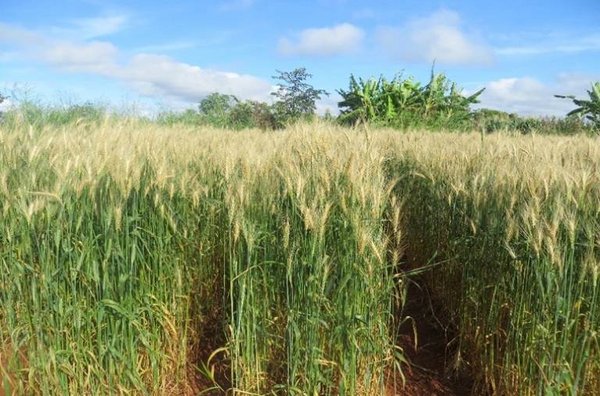 Read this article in French
Read this article in French- Share this article
- Subscribe to our newsletter
Genomic surveillance identifies global strain of emerging wheat disease fungus
A study published in the open-access journal PLOS Biology suggests that genomic surveillance could help manage emerging crop diseases and identify genetic traits for breeding disease-resistant crops. The study, conducted by researchers from University College London (UCL), UK, together with an international team of researchers from four continents and published on the 11th April, highlights the threat that pests and diseases pose to global wheat yields, which can be reduced by over 20 per cent.
One of the emerging diseases that poses a threat to wheat crops worldwide is wheat blast, a fungal disease that is now present in three continents. To better understand the disease its origins and its genetic makeup, researchers combined genome analyses and laboratory experiments, by which they determined the susceptibility of wheat varieties to the wheat blast fungus, and of wheat blast fungus to fungicides.
“Thanks to the prompt and public release of genomic data by the international scientific community through the OpenWheatBlast initiative, we were able to detect, track, and characterise the fungal lineage responsible for recent wheat blast outbreaks”, says Sergio Latorre, from the UCL Division of Biosciences, one of the lead authors of the new study.
Analysis of the recent emergence of wheat blast in Asia and Africa
The researchers discovered that the recent emergence of wheat blast in Asia and Africa was caused by a single clonal lineage of the fungus, with outbreaks in Zambia and Bangladesh originating independently. They also found that varieties of wheat carrying the Rmg8 gene were resistant to the fungal infection and that the fungus was sensitive to the fungicide strobilurin.
Co-author Hernán A. Burbano, from the UCL Division of Biosciences, explains that “the joint use of genomic surveillance and functional testing through laboratory experiments permit the establishment of genomics-informed integrated pest management practices and can guide plant breeders in the development of disease-resistant crops”.
While the research offers new tools to counteract emerging plant pathogens, the authors caution that a combined strategy that reduces reliance on chemical inputs and addresses the likelihood of crop diseases evolving resistance to pesticides and fungicides is needed.
According to the researchers, the emergence of more damaging variants of wheat blast is likely, which could increase the difficulty of managing the disease. Therefore, they stress the need for genomic surveillance on a global scale to track and monitor the wheat blast fungus and identify variants of concern as soon as they emerge.
Co-author Sophien Kamoun, from The Sainsbury Laboratory, explains that the study builds on the success of genomic surveillance in response to infectious disease outbreaks such as COVID-19. The researchers advocate for continued vigilance and genomics surveillance of wheat blast in Africa and Asia to identify Variants of Concern as soon as they emerge.
(UCL/wi)
Links:





Add a comment
Be the First to Comment